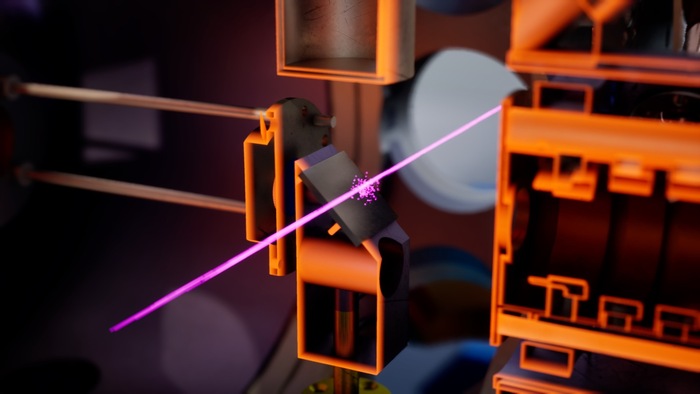NASA hopes to solve antimatter mysteries - Newly discovered "Pulsar" star should help
Created: 03/31/2022, 17:41
By: Magdalena von Zumbusch
The so-called "pulsar" stars could help to better understand the mystery of antimatter.
© Alex Nako/ Imago
The star, which could contain antimatter in its tail, is floating 1,200 light-years from Earth: What sounds esoteric is supposed to provide important insights.
Harvard - The Smithsonian Center for Astrophysics recently reported on the discovery: a "pulsar" star was discovered using a space telescope, the tail of which contains both matter and antimatter.
It is hoped that this will take important steps in antimatter research.
Video: "Pulsar" stars could represent sources of antimatter
Behind the 16-kilometer pulsar: A tail of 60 trillion kilometers of matter and antimatter
Astronomers have high hopes for the "pulsar" star dubbed J2030.
According to the Harvard-Smithsonian Center for Astrophysics, pulsars are rapidly rotating neutron stars that emit electromagnetic waves.
The now discovered pulsar with the full designation PSR J2030+4415 with a diameter of 16 kilometers races through space at a speed of one and a half million kilometers per hour and is currently located at a distance of 1600 light years from Earth.
Antimatter - consisting of so-called positrons - is found in particular in the Milky Way
The star is observed to study the phenomenon of antimatter, the Harvard researchers explain.
For a better understanding, the explanation of the Center for Astrophysics gets out: Most of the universe consists of ordinary matter and not of antimatter.
Nonetheless, detectors on Earth continue to show evidence of a relatively large number of positrons, particularly in the Milky Way, leading to the question: what are possible sources of this antimatter?
Researchers believe pulsars like PSR J2030+4415 could be an answer.
The combination of two extremes - fast rotation and high magnetic fields from pulsars - leads to particle acceleration and high-energy radiation that could create pairs of electrons and positrons.
Positrons are the antimatter counterparts of electrons.
Positrons originating from pulsars can probably reach our galaxy after all
Previously, astronomers had observed large halos around nearby pulsars, which suggested to the researchers that energetic positrons are having a hard time escaping into the galaxy.
Therefore, the initially developed theory that pulsars could explain the excess of positrons in our galaxy, especially in the Milky Way, was rejected again.
However, the now discovered pulsar star PSR J2030+4415 could show that the positrons could escape into interstellar space according to the original idea and finally reach the earth and thus the pulsar stars would be the origin of the antimatter in our galaxy.













